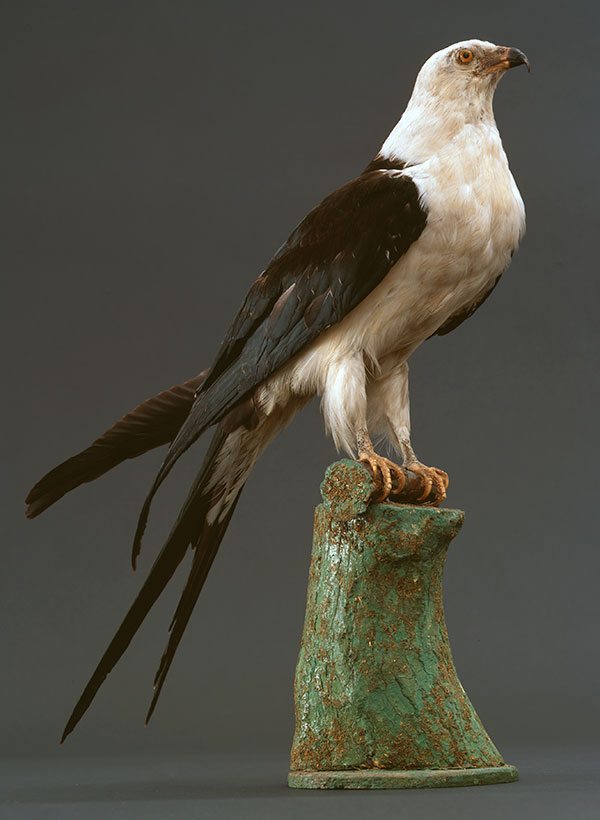American swallow-tailed kite
The American swallow-tailed kite is a bird of prey related to other kites, eagles, hawks, and falcons. Prior to 1900, the swallow-tailed kite bred in the United States from the Gulf Coast north through most of Minnesota and west into the Great Plains of the American West. The breeding range began to decline near the turn of the twentieth century, and today, this species breeds in small populations in the U.S. from South Carolina south to Florida, and west to eastern Louisiana. It is common only in Florida.
The rapid disappearance of this bird from northern and western parts of its range is still a mystery. However, it is usually attributed in part to cultivation of prairie landscapes where it foraged and logging of bottomland forests where it nested.
Natural history museum specimens help document changes in the distribution of species such as the swallow-tailed kite. This particular specimen was collected in 1884 near Hamilton, Nebraska, by William Townsley. It came to the Buffalo Bill Museum with a large collection of taxidermy mounts and was inventoried by then curator, Richard “Dick” Frost in 1960. Draper Natural History Museum staff carefully reviewed all specimens from this collection and chose to accession this particular one because of its importance in documenting the presence of a species now absent from much of its former range.
American swallow-tailed kite. Scientific name: Elanoides forficatus. Original Buffalo Bill Museum Collection. DRA.304.17
Post 022






